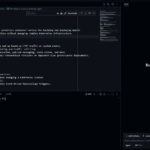
Configuring Azure Logic Apps and Functions for max uptime
July 12, 2025
Microsoft Learn Contributor Chatmode
July 13, 2025When you see the error “The process cannot access the file because it is being used by another process,” you can use several built-in or free tools to find out which process is locking the file or folder.
Using Resource Monitor
Resource Monitor is built into Windows:
- Press Win + R, type resmon, and press Enter. This will open Resource Monitor.
- Go to the CPU tab.
- In the Associated Handles section, use the search box to enter part of the file or folder name.
- The results will show which processes are using the file. Check the Image and PID columns to identify the process.
- You can right-click the process and select End Process if necessary (be cautious when ending processes).
Using Process Explorer
Process Explorer is a free tool from Microsoft Sysinternals:
- Download and run Process Explorer as administrator. You can acquire Process Explorer using the following WingGet command:
Winget install Microsoft.Sysinternals.ProcessExplorer
- In Process Explorer, Press Ctrl + F or go to Find > Find Handle or DLL.
- Type part of the file or folder name and click Search.
- The tool will list all processes currently using the file. Click an entry to highlight the process in the main window.
- You can right-click the handle and select Close Handle to release the file (use with caution).
Using Command Line Tools
- openfiles: Run openfiles /query in Command Prompt (may require enabling with openfiles /local on and a restart). This shows which files are open and by which process. You’d have to enable the local on option before the file got locked of course.
- handle.exe: Download from Sysinternals. You can acquire Handle.exe with the following WinGet command:
winget install Microsoft.Sysinternals.Handle
- Run handle.exe to list processes using the file.
